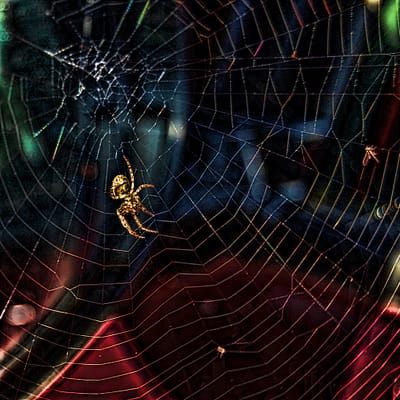
How do you like your noise?
Last night was one of these nights again… One of these famous broken nights that a life with a typical baby is notoriously known for. Trying to write academic stuff the day after is a challenge. So, time to start searching for a solution. As a developmental psychologist with an interest in a so-called perception-action perspective, I searched the internet for “baby” and “pink noise”. Although the term “baby” probably makes sense to you in this context, “pink noise” warrants an explanation.
Pink noise of processes
Opposed to what you might think, pink noise has nothing to do with the gender of my baby. Instead, pink noise is a phenomenon that is evident all across the natural world, and is characteristic of processes that run smoothly (also see the blog post by Marijn van Dijk and Paul van Geert). Pink noise indicates that a certain process A is related to a process B, which happens on a larger time scale than process A, and this process B in turn is related to process C on an even larger time scale, which then is related to process D, etc. However, process A is also related to process Z which happens at a smaller time scale, which in turn is related to process Y on an even smaller time scale, etc. Differently put, pink noise indicates that a process is nested across different time scales.
An example of pink noise can be found in your own heartbeat rhythm [1]. In this rhythm, the rest phase between your heartbeats is related to processes on a larger scale, such as exerting effort or illness, and to processes on a smaller scale, such as the nodes and circuits involved in contracting and relaxing your heart. If you would draw your heartbeat rhythm as a series of lines, in which the length of the lines corresponds to the length of the rest phases, something interesting appears. The length of the lines would not be completely random and disordered, which is referred to as white noise, nor would it be confined to a set of line lengths that is ordered, which is referred to as brown noise. Instead, the distribution of line lengths would be right in between order and disorder, and this specific pattern is called -as you might have guessed- pink noise.
A metaphor to illustrate these three types of colored noise can be found in a spider’s web. If the length of the threads in the web would be random (white noise), the web would not be strong, and the spider would not be able to catch its fly. However, if the threads would only exist of a confined set of different lengths (brown noise), this would not work either. Rather a balance between order and disorder of lengths of the threads (pink noise), in which the length of each thread is related to that of all the other threads, would result in a spider’s web that is up to its task.
White, pink and brown noise in sound
To greatly oversimplify the above, pink noise equals good. So, who knows it might also help to make a baby sleep like a baby. To my excitement (and surprise), my search on the internet lead to something – claimed benefits of actual noise of different colors! I stumbled upon this website: simplynoise.com and curiously started playing the sounds. White noise, which consists of sound waves at random frequencies, made me feel a bit on edge, while pink noise, which is made up of sound waves with frequencies of a pink distribution, seemed to have a relaxing effect on me. Lastly, brown noise, which were sound waves of a limited diversity of frequencies, actually made my eyelids feel heavy – this was promising! Intrigued by my personal experience, I decided to find out what science has to say about this connection between colored sounds and state of mind.
With regard to white noise, a number of studies indicate that individuals with diagnosed ADHD benefit from listening to white noise [2][3][4], being able to concentrate and perform better. Another study found that listening to white noise indeed enhanced concentration levels in sub-attentive children, while it actually decreased concentration levels in super-attentive children [5]. Furthermore, studies found that listening to white noise enhanced sleeping in toddlers [6], children with autism [7], children and adolescents [8], college students [9] and hospital patients [10], who previously experienced difficulties with sleeping. Lastly, listening to white noise was found to foster a more healthy postural sway pattern in elderly [11], and to reduce agitation in elderly with dementia [12]. In sum, listening to white noise seems to improve processes that were previously sub-optimal.
When I searched for positive effects of listening to pink noise, studies were sparser. However, it was found that listening to pink noise increased attention levels in healthy students [13]. Furthermore, there is some evidence that listening to pink noise makes it easier to fall asleep [14], and induces a higher quality of sleeping in healthy individuals [15]. With regard to the proposed (and personally experienced 😊) relaxing effect of listening to pink noise, I found only one study from 1973 with a heterogeneous sample [16]. In this study, 11 out of 12 participants said to have experienced a relaxing effect as well. When it comes to the benefits of listening to brown noise, I was not able to find any studies to support this claim.
What noise to put on?
Returning to my quest of finding a solution to my broken nights, I could try to make my baby listen to either white or pink noise. If he is like his mom, putting on some brown noise is worth a shot as well – although I am afraid my experience was due to a placebo-effect and I’m not sure if I can convince my baby likewise. If I were you, I would find out how listening to these sounds works for you. There might be one out there that you accidentally happen to like.
Relevant links and publications




